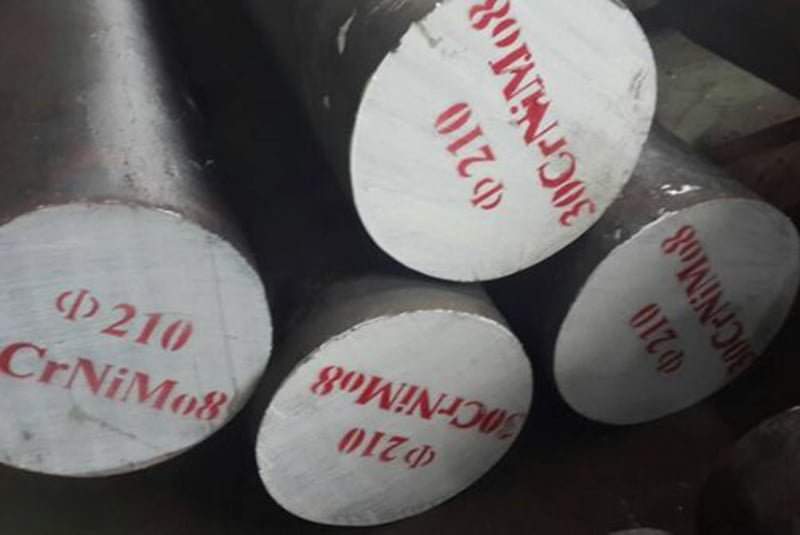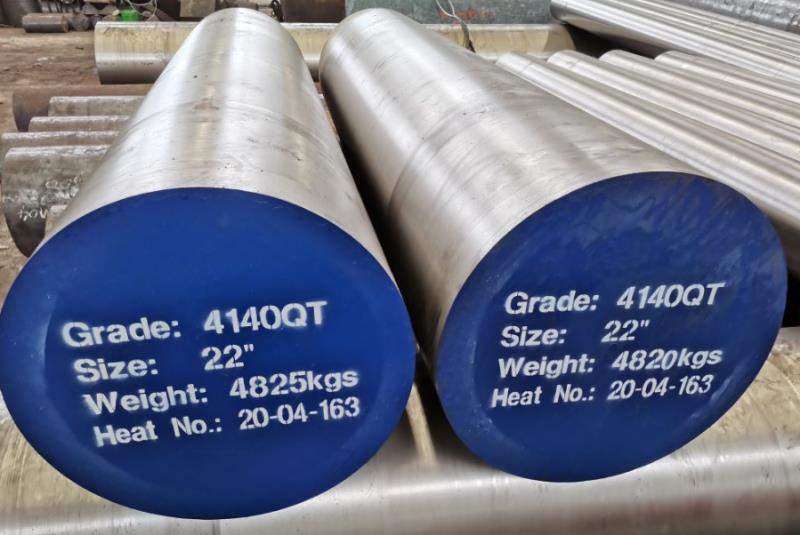Introduction
Alloy steel is widely used in various industries due to its enhanced mechanical properties and versatility. However, like all metals, alloy steel is susceptible to rust and corrosion under certain conditions. Understanding why alloy steel rusts and how to prevent it is crucial for maintaining its structural integrity and prolonging its lifespan. This comprehensive guide will delve into the causes of alloy steel rust, effective prevention methods, and practical tips for maintaining your alloy steel products.
Understanding Alloy Steel and Rust

What is Alloy Steel?
Alloy steel is a type of steel that includes various alloying elements, such as chromium, nickel, and manganese, to enhance its mechanical properties and resistance to wear and corrosion. These alloying elements significantly improve the steel’s strength, hardness, and durability, making it suitable for a wide range of applications.
- Composition: Iron, carbon, and alloying elements (e.g., chromium, nickel).
- Properties: Enhanced strength, hardness, and corrosion resistance.
What is Rust?
Rust is a common term for iron oxide, which forms when iron or its alloys react with oxygen and moisture. This electrochemical reaction results in the formation of a reddish-brown flaky coating that weakens the metal, leading to structural damage and reduced functionality.
- Chemical Reaction: Iron + Oxygen + Water → Iron Oxide (Rust).
- Impact: Weakens metal, causes structural damage.
Why Does Alloy Steel Rust?
Despite its enhanced properties, alloy steel can still rust under certain conditions. The primary reasons for alloy steel rust include:
- Exposure to Moisture: Prolonged exposure to water or high humidity levels.
- Presence of Oxygen: Oxygen in the air reacts with iron in the steel.
- Lack of Protective Coatings: Absence of coatings that prevent oxidation.
- Environmental Factors: Pollutants and chemicals that accelerate corrosion.
Causes of Alloy Steel Rust
Environmental Factors
Humidity and Moisture
High humidity and moisture are significant contributors to alloy steel rust. When alloy steel is exposed to a damp environment, the moisture facilitates the electrochemical reaction between iron and oxygen, leading to rust formation.
- High Humidity: Promotes rust formation.
- Damp Environments: Increases risk of corrosion.
Pollution and Chemicals
Industrial pollutants and chemicals can accelerate the rusting process. Sulfur dioxide, chlorides, and other corrosive substances in the atmosphere or in contact with the steel can significantly speed up the rusting process.
- Industrial Pollutants: Accelerate rust formation.
- Corrosive Chemicals: Increase corrosion rate.
Material Composition
Alloying Elements
The type and amount of alloying elements in the steel influence its susceptibility to rust. For example, higher chromium content in stainless steel enhances its corrosion resistance, while lower alloy content makes the steel more prone to rust.
- Chromium: Increases corrosion resistance.
- Nickel: Enhances strength and durability.
Impurities
Impurities in the steel can also affect its corrosion resistance. Elements like sulfur and phosphorus can create weak spots in the steel structure, making it more susceptible to rust.
- Sulfur and Phosphorus: Reduce corrosion resistance.
- Impurities: Create weak spots in the steel.
Mechanical Factors
Surface Damage
Scratches, dents, and other surface damages expose the underlying metal to the environment, increasing the risk of rust. Proper handling and maintenance are essential to prevent surface damage and subsequent rust formation.
- Scratches and Dents: Expose metal to environmental elements.
- Proper Handling: Prevents surface damage.
Welding and Fabrication
Welding and fabrication processes can alter the protective oxide layer on the steel surface, making it more susceptible to rust. Using appropriate welding techniques and post-welding treatments can help mitigate this risk.
- Welding: Can damage protective oxide layer.
- Post-Welding Treatments: Restore corrosion resistance.
Preventing Alloy Steel Rust

Protective Coatings
Paints and Varnishes
Applying paints and varnishes is a common method to protect alloy steel from rust. These coatings create a barrier between the steel and the environment, preventing moisture and oxygen from reaching the metal surface.
- Paints: Provide a protective barrier.
- Varnishes: Enhance corrosion resistance.
Galvanization
Galvanization involves coating the steel with a layer of zinc, which acts as a sacrificial anode. The zinc layer corrodes instead of the steel, providing long-term protection against rust.
- Zinc Coating: Protects steel from corrosion.
- Long-Term Protection: Effective in various environments.
Cathodic Protection
Sacrificial Anodes
Sacrificial anodes, such as zinc or magnesium, are used in cathodic protection to prevent rust. These anodes corrode preferentially, protecting the alloy steel from rusting.
- Zinc or Magnesium Anodes: Sacrificially corrode.
- Cathodic Protection: Shields steel from rust.
Impressed Current
Impressed current systems use an external power source to provide a constant protective current to the steel, preventing rust. This method is commonly used in large structures like pipelines and storage tanks.
- External Power Source: Provides protective current.
- Large Structures: Effective for pipelines and tanks.
Environmental Control
Humidity Control
Controlling the humidity levels in the storage and operational environments of alloy steel can significantly reduce the risk of rust. Using dehumidifiers and proper ventilation helps maintain low humidity levels.
- Dehumidifiers: Reduce moisture in the air.
- Ventilation: Maintains low humidity levels.
Pollution Control
Reducing exposure to pollutants and corrosive chemicals is crucial for preventing alloy steel rust. Implementing pollution control measures and using protective covers can minimize the risk of corrosion.
- Pollution Control: Reduces exposure to corrosive substances.
- Protective Covers: Shield steel from pollutants.
Maintenance and Inspection
Regular Cleaning
Regular cleaning removes dirt, moisture, and corrosive substances from the steel surface, preventing rust formation. Using appropriate cleaning agents and methods is essential to avoid damaging the steel.
- Cleaning Agents: Remove contaminants.
- Regular Maintenance: Prevents rust buildup.
Inspection and Repairs
Frequent inspections and timely repairs of any surface damage or protective coating failures are vital to maintaining the integrity of alloy steel. Addressing issues promptly can prevent rust from spreading.
- Frequent Inspections: Identify potential rust issues.
- Timely Repairs: Maintain steel integrity.
Table: Methods of Preventing Alloy Steel Rust
| Method | Description | Benefit |
|---|---|---|
| Paints and Varnishes | Protective coatings applied to the steel surface | Barrier against moisture and oxygen |
| Galvanization | Zinc coating that acts as a sacrificial anode | Long-term rust protection |
| Sacrificial Anodes | Anodes corrode preferentially, protecting steel | Effective cathodic protection |
| Impressed Current | External power source provides protective current | Ideal for large structures |
| Humidity Control | Dehumidifiers and ventilation to reduce moisture | Reduces risk of rust |
| Pollution Control | Minimizes exposure to corrosive pollutants | Prevents accelerated rusting |
| Regular Cleaning | Removes contaminants from steel surface | Maintains cleanliness and prevents rust |
| Inspection and Repairs | Frequent checks and timely fixing of damages | Ensures long-term protection |
Conclusion
Alloy steel is an excellent material choice for various applications due to its enhanced properties. However, it is not immune to rust. Understanding the causes of alloy steel rust and implementing effective prevention methods can significantly prolong the lifespan and maintain the performance of your steel products. By using protective coatings, cathodic protection, environmental control, and regular maintenance, you can keep your alloy steel in optimal condition and prevent rust from compromising its integrity.
FAQ
What causes alloy steel to rust?
Alloy steel rusts due to exposure to moisture, oxygen, pollutants, and corrosive chemicals. Lack of protective coatings and surface damage can also increase the risk of rust formation.
How can I prevent rust on alloy steel?
You can prevent rust on alloy steel by applying protective coatings such as paints, varnishes, or galvanization. Using cathodic protection methods, controlling environmental factors like humidity and pollution, and performing regular cleaning and maintenance also help.
What is the role of chromium in preventing alloy steel rust?
Chromium in alloy steel forms a passive oxide layer on the surface, which acts as a barrier against moisture and oxygen, enhancing the steel’s corrosion resistance and preventing rust.
How does galvanization protect alloy steel from rust?
Galvanization involves coating alloy steel with a layer of zinc. The zinc acts as a sacrificial anode, corroding in place of the steel and providing long-term protection against rust.
Why is regular maintenance important for preventing rust on alloy steel?
Regular maintenance, including cleaning and inspection, removes contaminants and identifies potential rust issues early. Timely repairs and proper maintenance practices prevent rust from spreading and compromising the steel’s integrity.
Can cathodic protection be used for all alloy steel structures?
Cathodic protection is particularly effective for large structures like pipelines, storage tanks, and marine equipment. It can be applied using sacrificial anodes or impressed current systems to protect alloy steel from rust.
How does humidity control help in preventing alloy steel rust?
Controlling humidity levels in storage and operational environments reduces moisture in the air, which is a key factor in rust formation. Using dehumidifiers and proper ventilation helps maintain low humidity levels and prevent rust.
What are sacrificial anodes and how do they work?
Sacrificial anodes, typically made of zinc or magnesium, corrode preferentially to protect alloy steel from rust. They are used in cathodic protection systems, where the anodes sacrificially corrode, preventing the steel from rusting.
What are the signs of rust on alloy steel?
Signs of rust on alloy steel include reddish-brown flaky coatings, surface pitting, and visible corrosion spots. Regular inspection helps identify these signs early, allowing for timely intervention and repair.
Can alloy steel be completely rust-proof?
While alloy steel can be made highly resistant to rust through the use of alloying elements like chromium and protective measures, it is not entirely rust-proof. Proper maintenance, protective coatings, and environmental control are essential to minimize the risk of rust.
